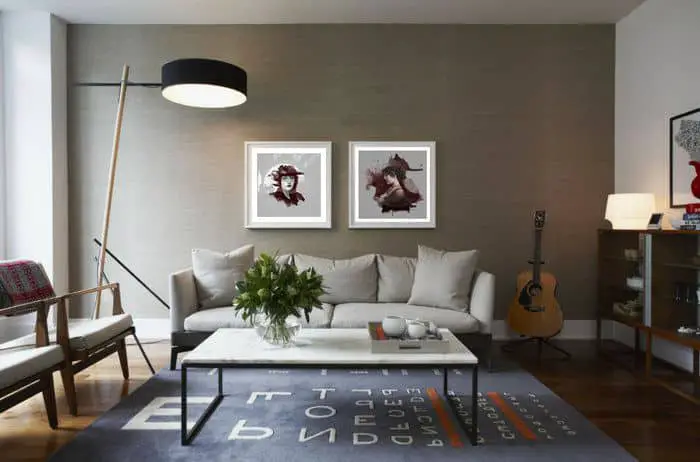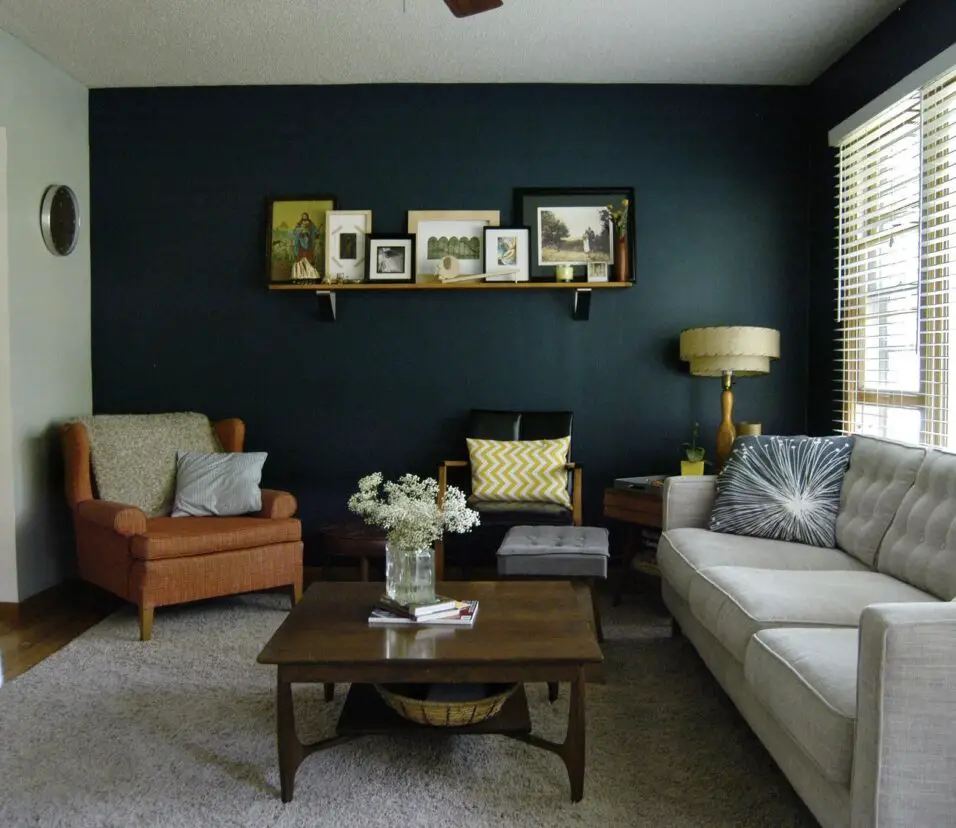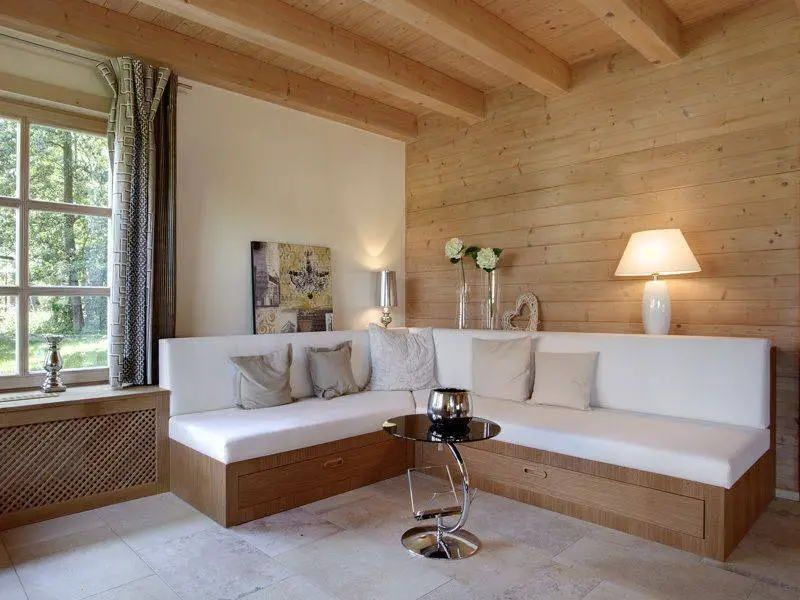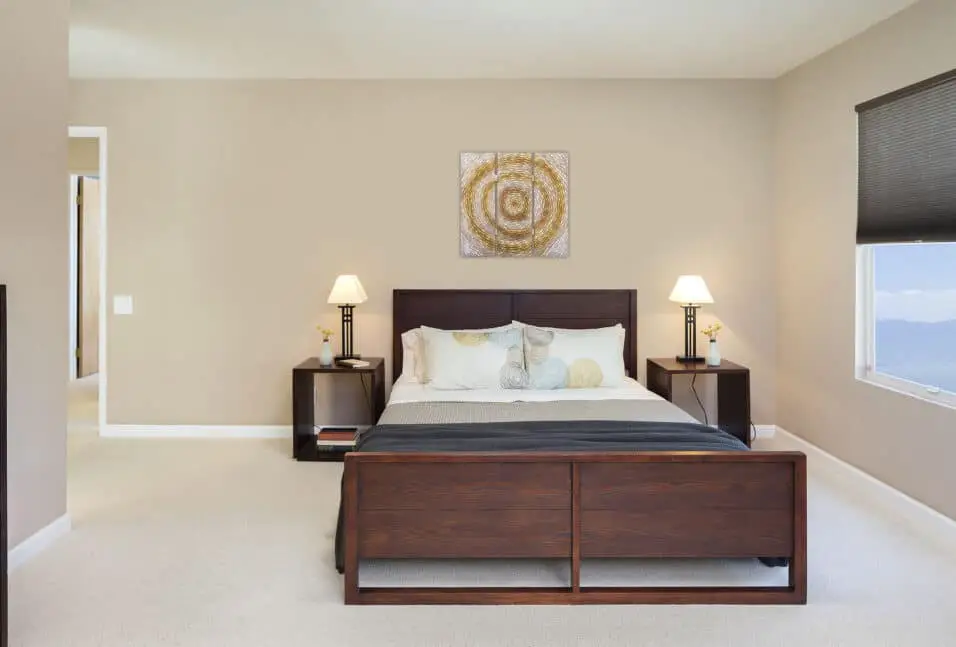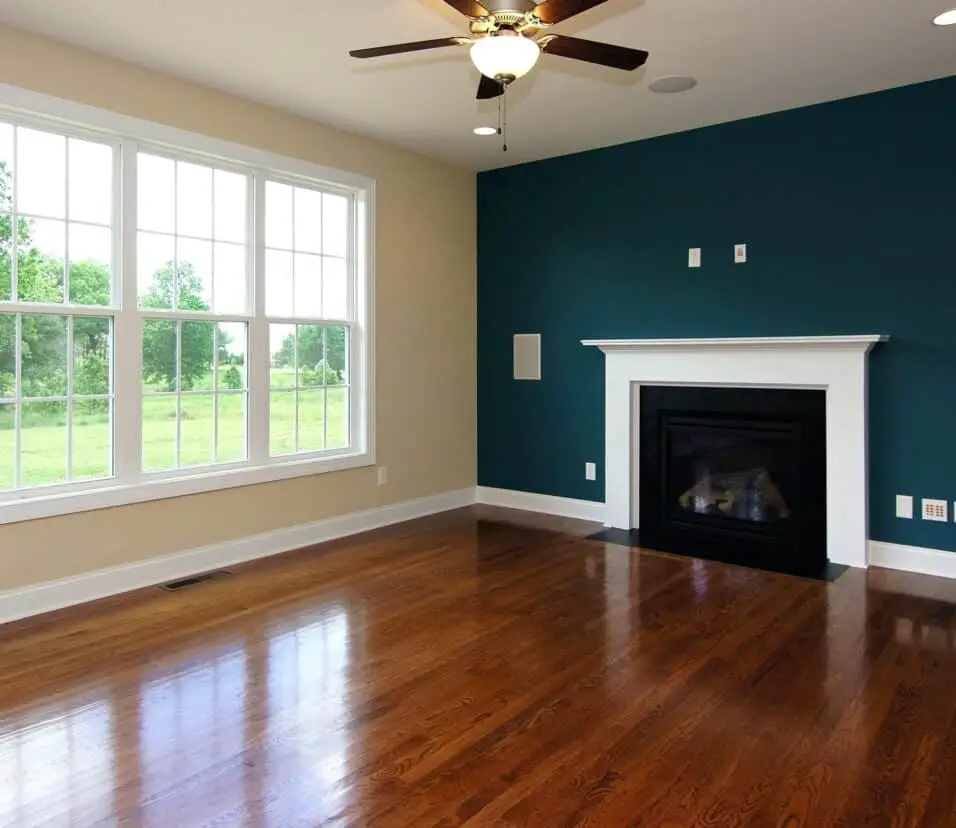How Many Accent Walls In A Room
Introduction
How Many Accent Walls In A Room: When it comes to interior design, one of the most popular trends in recent years has been the concept of accent walls. These walls, often painted or decorated in a different color or pattern than the rest of the room, serve as a focal point and add visual interest to the space. Whether you’re a homeowner looking to spruce up your living room or a designer working on a commercial project, understanding the concept of accent walls and how to incorporate them effectively can make a significant difference in the overall aesthetic appeal of a room.
Accent walls are not a new concept; they have been used in interior design for decades. However, their popularity has surged in recent years as homeowners and designers seek to create unique and visually appealing spaces. The idea behind an accent wall is to draw attention to a specific area of a room, whether it’s a fireplace, a piece of artwork, or simply a wall that you want to highlight. By using a different color or pattern on this wall, you can create a sense of depth and dimension, making the room feel more dynamic and interesting.
Accent walls are a fantastic way to add personality and style to a room. By strategically incorporating a different color or pattern on a specific wall, you can create a focal point that enhances the overall aesthetic appeal of the space. However, it’s important to consider the size and design of the room, as well as the desired effect, when determining the number of accent walls to include. With careful planning and consideration, accent walls can transform an ordinary room into a visually stunning and captivating space.

How many rooms should have an accent wall?
We recommend sticking to one accent wall per room. Picking two or three will dilute the effect; the room will feel like a collage of colours rather than a carefully designed palette.
An accent wall is a popular design technique used to add visual interest and create a focal point in a room. It involves painting or decorating one wall in a different color or pattern than the rest of the walls. The purpose of an accent wall is to enhance the overall aesthetic appeal of a space and make it more visually appealing. However, determining how many rooms should have an accent wall depends on various factors such as the size of the room, the overall design scheme, and personal preference.
Factors to Consider:
When deciding how many rooms should have an accent wall, it is essential to consider the size of the room. In smaller rooms, having multiple accent walls can make the space feel overwhelming and visually cluttered. It is generally recommended to limit the number of accent walls in smaller rooms to maintain a balanced and harmonious look.
Another factor to consider is the overall design scheme of the house or the specific room. If the design style is minimalistic or contemporary, having too many accent walls can disrupt the clean and streamlined aesthetic. On the other hand, in rooms with a more eclectic or bohemian design, multiple accent walls can add to the overall artistic and vibrant atmosphere.
Personal Preference:
Ultimately, the decision of how many rooms should have an accent wall comes down to personal preference. Some individuals may prefer a more subtle and cohesive look throughout their home, opting for only one or two accent walls in specific rooms. Others may enjoy experimenting with different colors and patterns, choosing to have accent walls in multiple rooms.
It is important to consider the purpose of each room when deciding on accent walls. For example, a bedroom may benefit from a calming and soothing accent wall behind the bed, while a living room could have an accent wall that complements the furniture and decor. By carefully selecting the rooms where accent walls will have the most impact, you can create a visually appealing and cohesive design throughout your home.
The decision of how many rooms should have an accent wall depends on various factors such as the size of the room, the overall design scheme, and personal preference. It is important to strike a balance between creating visual interest and maintaining a harmonious look. By considering these factors and carefully selecting the rooms where accent walls will have the most impact, you can enhance the aesthetic appeal of your home and create a space that reflects your personal style.
How many walls can be accent walls?
We recommend sticking to one accent wall per room. Picking two or three will dilute the effect; the room will feel like a collage of colours rather than a carefully designed palette.
An accent wall is a popular interior design technique used to add visual interest and create a focal point in a room. It involves painting or decorating one wall in a different color or pattern than the other walls in the space. This technique can transform a plain room into a stylish and dynamic space. However, the number of walls that can be accent walls depends on various factors such as the size of the room, the desired effect, and the overall design concept.
Factors to Consider:
When deciding how many walls can be accent walls, it is important to consider the size of the room. In smaller rooms, having multiple accent walls can make the space feel overwhelming and visually cluttered. It is generally recommended to limit the number of accent walls to one or two in smaller rooms to maintain a balanced and cohesive look.
In larger rooms, on the other hand, you have more flexibility in terms of the number of accent walls. You can choose to have multiple accent walls to create a sense of drama and visual interest. However, it is still important to ensure that the overall design remains harmonious and doesn’t overpower the space.
Design Concept:
The desired effect and the overall design concept of the room also play a crucial role in determining the number of accent walls. If the goal is to create a bold and dramatic statement, having multiple accent walls can be a great choice. This approach works well in contemporary or eclectic designs where mixing colors and patterns is encouraged.
On the other hand, if the design concept is more minimalistic or focused on creating a serene and calming atmosphere, it is advisable to stick to a single accent wall. This allows the chosen color or pattern to stand out without overwhelming the space.
The number of walls that can be accent walls depends on various factors such as the size of the room, the desired effect, and the overall design concept. While smaller rooms generally benefit from one or two accent walls, larger rooms offer more flexibility in terms of the number of accent walls. It is important to strike a balance and ensure that the chosen accent walls enhance the overall design of the space without overpowering it. By carefully considering these factors, you can create a visually appealing and harmonious interior design with accent walls.
What is the rule for accent walls?
Go with a color that is darker than the other walls in the room. A darker hue will contrast with the lighter walls and pull eyes straight to it, which is what you want. A good rule of thumb is to paint the accent wall the same color as the other walls, but 2 shades darker.
An accent wall is a popular interior design technique that involves painting or decorating one wall in a room differently from the others. It is a way to add visual interest, depth, and personality to a space. The rule for accent walls is to create a focal point in a room by highlighting a specific area or architectural feature. This technique can be applied to any room in a house, including living rooms, bedrooms, dining rooms, and even bathrooms.
The purpose of an accent wall is to draw attention and create a sense of drama or contrast. It can be achieved by using a different color, pattern, texture, or material on the chosen wall. The color or design of the accent wall should complement the overall color scheme and style of the room. It is important to choose a wall that has a natural focal point, such as a fireplace, a large window, or a piece of artwork.
Accent walls
When selecting a color for an accent wall, it is advisable to choose a shade that is darker or bolder than the other walls in the room. This will create a striking contrast and make the accent wall stand out. However, it is also important to consider the natural lighting in the room and the mood you want to create. Darker colors can make a room feel cozy and intimate, while lighter colors can make it feel more spacious and airy.
There are other ways to make an accent wall besides paint. Wallpaper, repurposed wood, stone veneer, and big murals give texture and visual appeal. These materials can be put to the entire wall or a piece of it, depending on the effect. Choose a material that matches the room’s style and concept.
The rule for accent walls is to create a focal point in a room by highlighting a specific area or architectural feature. This can be achieved through the use of color, pattern, texture, or material. The chosen wall should have a natural focal point and the color or design of the accent wall should complement the overall color scheme and style of the room. Whether using paint, wallpaper, or other materials, an accent wall can add visual interest, depth, and personality to any space.
Should you have two accent walls?
DO Pick the Right Wall. When it comes to accent walls, only one wall gets to be the accent wall. If you were to pick more than one, then it wouldn’t have the same effect and you may as well paint the entire room. Because only one wall gets to be the accent wall, you must choose wisely.
Accent walls have become a popular trend in interior design, allowing homeowners to add a touch of personality and style to their living spaces. However, the question arises: should you have two accent walls? In this article, we will explore the pros and cons of having multiple accent walls and provide insights to help you make an informed decision.
Benefits of Two Accent Walls:
Having two accent walls can create a visually striking and dynamic look in a room. By choosing two different walls to highlight, you can create a balanced and harmonious design. This approach works particularly well in larger rooms or open floor plans, where multiple accent walls can help define different areas or zones within the space.
Furthermore, two accent walls can provide an opportunity to incorporate different colors, patterns, or textures into your interior design scheme. This can add depth and visual interest to the room, making it more visually appealing and engaging. By carefully selecting complementary colors or contrasting patterns, you can create a cohesive and eye-catching design that reflects your personal style.
Considerations for Two Accent Walls:
While two accent walls might be attractive, the room’s balance and harmony must be considered. Multiple accent walls might look chaotic or overwhelming if done improperly. Accent wall colors, patterns, and textures must match the room’s dcor.
When choosing accent walls, consider the room’s size and layout. In smaller areas, two accent walls may feel crowded. Larger rooms can benefit from two accent walls for proportion and balance.
Personal desire and space characteristics determine whether you have two accent walls. Multiple accent walls can make a room look amazing when done appropriately. To get a favorable appearance, the room’s balance, harmony, and spaciousness must be carefully considered. If you want to add innovation and style to your living space, try two accent walls.
Can you have 2 accent walls in living room?
Accent walls are limited to one wall. If you choose more than one, it won’t work and you might as well paint the space. Only one wall can be the accent wall, so choose wisely.
Interior design trends like accent walls let homeowners add personality and flare to their homes. Traditional rooms include one accent wall, but there is no rule. In fact, two accent walls in a living room can make it stand out. Before adding additional accent walls to your living room, consider a few factors.
Your living room’s color scheme and style are very significant. When choosing two accent walls, make sure the colors and patterns match and match the room’s dcor. Contrasting colors or patterns provide a powerful, dramatic look, while complementing tones give a more subtle, harmonious aesthetic. Choosing accent wall colors that match your living room’s mood is also important.
Style of your living room
The purpose of accent walls should also be considered. Do you want to showcase a fireplace or built-in bookshelf? Want to make your furniture arrangement stand out? Knowing the accent walls’ purpose will help you arrange and design them. If you have a fireplace on one side and a wide window on the other, accent walls on both sides can highlight these elements and balance the area.
Designing a room’s accent walls depends on the array “”how many accent walls in a room””. The color, texture, or material of accent walls adds visual interest and focus to a room. Designers and homeowners can use an array to balance accent walls, improving the space’s appearance.
Consider the room’s size, arrangement, and desired effect when choosing accent walls. To many accent walls can create a chaotic and overbearing ambiance, while too few may lack visual interest. The array helps choose the right amount of accent walls to match the room’s style and make it look good.
How can the array “”how many accent walls in a room”” be used to enhance the aesthetics of a space?
Accent walls provide visual appeal and personality to a room. The array “”how many accent walls in a room”” can be used to determine the best number of accent walls to enhance a room’s design and mood.
First, accent walls are supposed to capture attention and add drama to a room. Strategically positioning accent walls can emphasize architectural features like a fireplace or unusual wall texture or create a lovely backdrop for artwork or furniture. The array can assist determine how many accent walls are needed to get the desired effect without overpowering the space.
The amount of accent walls should depend on the room’s size, layout, color scheme, and design style. To avoid cramping smaller areas, fewer accent walls are recommended. However, larger rooms can support many accent walls for additional creativity and aesthetic effect.
Additionally, it is important to maintain a balance between the accent walls and the rest of the room. Too many accent walls can create a chaotic and disjointed look, while too few may result in a lack of visual interest. The array can help in finding the ideal number of accent walls that will harmonize with the overall design scheme and enhance the aesthetics of the space.
What factors should be considered when determining the number of accent walls in a room?
The amount of accent walls in a room depends on numerous criteria. First, room size and arrangement matter. Multiple accent walls work best in larger rooms. Size is also important, as too many large accent walls in a small room can look cluttered and overwhelming.
Another consideration is the room’s purpose. distinct rooms have distinct functions, therefore accent walls should reflect this. In a bedroom, an accent wall behind the bed can offer visual interest without overpowering the space. However, several accent walls might delineate zones or highlight architectural details in a living room or dining room.
The room’s color scheme and decor should also be considered. Accent walls should match the room’s decor. To create a coherent aesthetic, examine the colors and patterns of the furniture, flooring, and accessories. To create a balanced and attractive setting, accent walls should enhance the aesthetics without overwhelming the room.
How does the size of a room impact the decision of how many accent walls to have?
The size of a room plays a crucial role in determining the number of accent walls that should be incorporated into the space. When deciding on the number of accent walls, it is important to consider the overall proportion and scale of the room. A larger room can typically accommodate multiple accent walls without overwhelming the space, while a smaller room may benefit from a single accent wall to create a focal point.
For smaller rooms, having too many accent walls can make the space feel cluttered and visually busy. It is essential to strike a balance between adding visual interest and maintaining a sense of openness. In these cases, it is advisable to opt for a single accent wall that can make a significant impact without overpowering the room.
The amount of accent walls in larger rooms is more flexible. Multiple accent walls might divide the space or highlight architectural characteristics. To achieve a unified and balanced look, accent walls should be appropriately dispersed across the space.
Are there any guidelines or design principles that can help determine the ideal number of accent walls in a room?
When it comes to determining the ideal number of accent walls in a room, there are several guidelines and design principles that can be considered. One important factor to consider is the size of the room. In smaller rooms, having too many accent walls can make the space feel overwhelming and cluttered. On the other hand, larger rooms can accommodate multiple accent walls without feeling cramped.
Another consideration is the overall aesthetic and style of the room. It is important to maintain a sense of balance and harmony in the space. If the room already has bold or busy patterns in the furniture or decor, it may be best to limit the number of accent walls to avoid overwhelming the senses. Conversely, if the room has a more minimalist or neutral design, adding a few accent walls can help create visual interest and focal points.
Additionally, the purpose of the room should be taken into account. For example, in a bedroom where relaxation is key, having too many accent walls can create a sense of restlessness. On the other hand, in a living room or dining area where socializing and entertainment are the main activities, having multiple accent walls can add excitement and energy to the space.
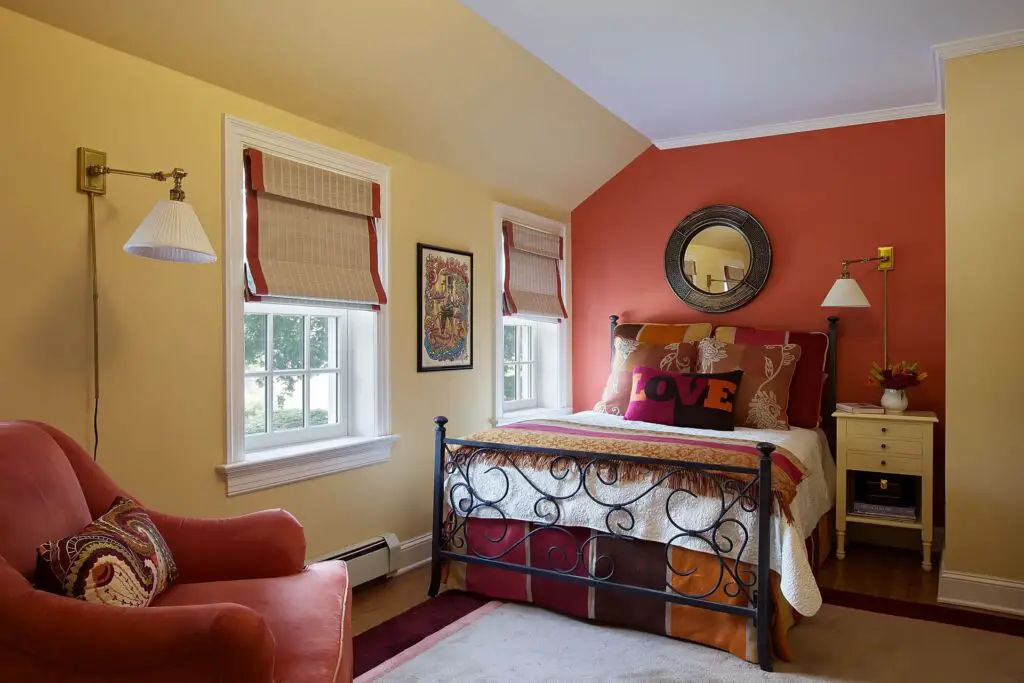
Conclusion
Analysis of “”how many accent walls in a room,”” shows that accent walls are a prominent interior design trend. Accent walls create a focal point and visual interest by painting or decorating one wall differently from the others. It lets people customize their homes and exhibit their creativity. Accent walls can change an area without a major remodel. Homeowners can transform a room by focusing on one wall.
Accent walls allow you to express your taste with a bright color, wallpaper pattern, or textured finish. Accent walls can also make an open floor plan appear larger or divide it into separate regions. Homeowners can maximize space functionality and aesthetics by carefully placing and designing accent walls.
Furthermore, accent walls offer a cost-effective solution for those who want to update their living spaces on a budget. Instead of investing in expensive furniture or accessories, individuals can achieve a fresh look by simply focusing on one wall. This makes accent walls a versatile option for both homeowners and renters, as they can easily be changed or removed without significant financial implications. Additionally, accent walls provide an opportunity to experiment with different colors and patterns, allowing individuals to explore their creativity and find the perfect design that suits their preferences.




